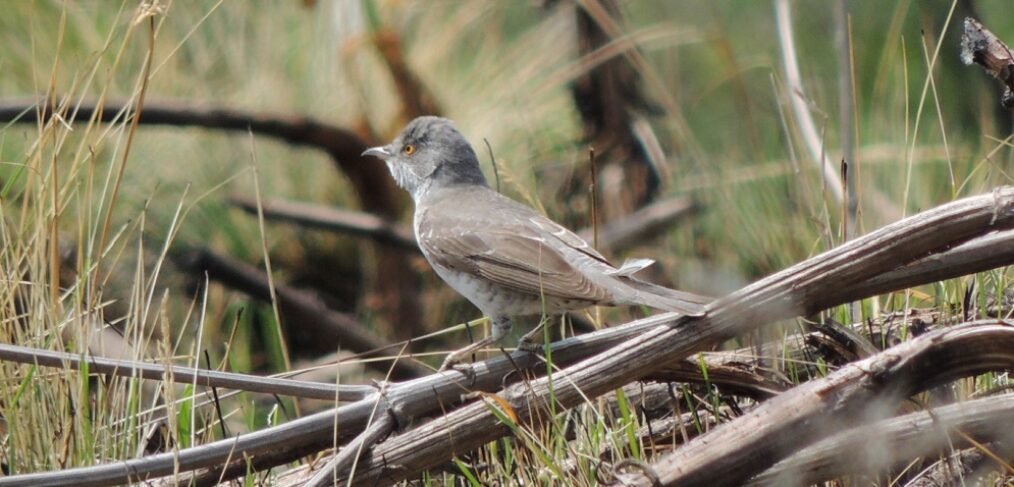
Species of the week #124 – Barred Warbler
Barred warblers are not mosquitoes, but a bird species found mainly in eastern Germany. Because barred warblers have very specific habitat requirements, they are rare. The males build several nests in dense, thorny bushes. However, they not only want enough space for this, but only build in locations with at least one high lookout nearby. They also have preferences regarding the species in the neighbourhood. Their preferred neighbours are red-backed shrikes. Because this combination is so common, it could be that both bird species benefit from living together. What this advantage might be is still the subject of research.
|
Distribution status in Germany
|
endangered |
|
Remaining occurance
|
Mecklenburg-Western Pomerania, Saxony and Brandenburg |
|
Last sighting in Germany
|
Summer 2022
|
|
Habitat
|
Sunny, extensive meadows, heathland and post-mining landscapes |
|
Threat
|
Clearing of scrub and fallow land, food decline |
Barred warblers can be recognised by their light eyes, which give them a piercing, severe facial expression, and their particularly long tail feathers. The dark upperparts are the same grey-brown colour in both sexes, males have distinct banding and a yellow iris.
The male builds several nests in spring, of which the female chooses the best and lays four to five eggs. These are incubated by both partners. However, the males do not help feed the chicks until they are a little bigger. The diet includes various invertebrates such as insects and spiders. As soon as berries ripen in summer, the birds also eat vegetarian food.
Since the 19th century, climatic fluctuations have led to several range expansions, which have, however, been abandoned again (e.g. in northern Bavaria and Baden-Württemberg). The total German population was estimated at about 9,000 breeding pairs in the 1980s. The Barred Warbler winters as a long-distance migrant in eastern Africa from South Sudan to northern Tanzania. The European breeding birds fly eastwards around the Mediterranean. The migration takes place between mid-July and early September.
The population of Barred Warblers is declining throughout Europe except in Bulgaria. The EU has identified the restructuring of agricultural plots as the main reason for their endangerment. This means not only the loss of scrub and individual trees, but also afforestation and grassland conversion. In addition, the use of insecticides is reducing the food supply.
Almost half of the German population is concentrated in Mecklenburg-Western Pomerania, especially in the eastern areas. A further 17 % of all breeding pairs in eastern Germany settle in Saxony-Anhalt. Focal areas are some river sections of the Elbe, Saale and Unstrut and their tributaries. Very high densities have also been recorded at the Colbitz-Letzlinger Heide military training area near Salchau.
Politically necessary:
– Preservation and development of bushy, sunny slopes, especially thickets rich in thorn bushes in extensively used meadows, fallow land and moorland.
– Prohibition of pesticide use in nature conservation and Natura 2000 areas
– Effective protection of dry and rough grasslands
